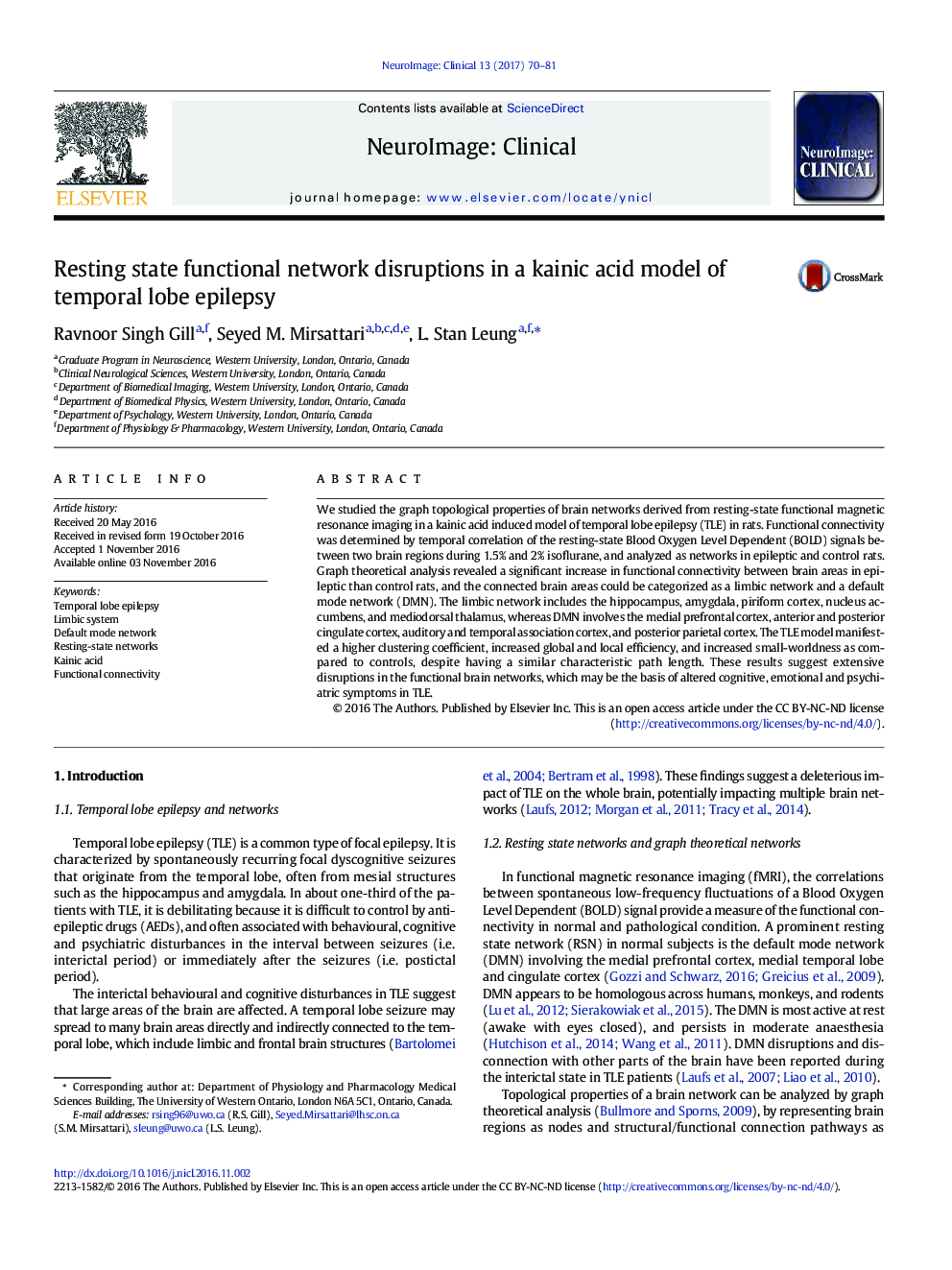| کد مقاله | کد نشریه | سال انتشار | مقاله انگلیسی | نسخه تمام متن |
|---|---|---|---|---|
| 8688841 | 1580954 | 2017 | 12 صفحه PDF | دانلود رایگان |
عنوان انگلیسی مقاله ISI
Resting state functional network disruptions in a kainic acid model of temporal lobe epilepsy
ترجمه فارسی عنوان
اختلالات شبکه عملکردی حالت در یک مدل اسید کرییک از صرع لوب صرعی
دانلود مقاله + سفارش ترجمه
دانلود مقاله ISI انگلیسی
رایگان برای ایرانیان
کلمات کلیدی
صرع لوب صرع، سیستم لیمبیک، شبکه حالت پیش فرض شبکه های دولت در حالت استراحت اسید کینیک، اتصال به عملکرد
موضوعات مرتبط
علوم زیستی و بیوفناوری
علم عصب شناسی
روانپزشکی بیولوژیکی
چکیده انگلیسی
We studied the graph topological properties of brain networks derived from resting-state functional magnetic resonance imaging in a kainic acid induced model of temporal lobe epilepsy (TLE) in rats. Functional connectivity was determined by temporal correlation of the resting-state Blood Oxygen Level Dependent (BOLD) signals between two brain regions during 1.5% and 2% isoflurane, and analyzed as networks in epileptic and control rats. Graph theoretical analysis revealed a significant increase in functional connectivity between brain areas in epileptic than control rats, and the connected brain areas could be categorized as a limbic network and a default mode network (DMN). The limbic network includes the hippocampus, amygdala, piriform cortex, nucleus accumbens, and mediodorsal thalamus, whereas DMN involves the medial prefrontal cortex, anterior and posterior cingulate cortex, auditory and temporal association cortex, and posterior parietal cortex. The TLE model manifested a higher clustering coefficient, increased global and local efficiency, and increased small-worldness as compared to controls, despite having a similar characteristic path length. These results suggest extensive disruptions in the functional brain networks, which may be the basis of altered cognitive, emotional and psychiatric symptoms in TLE.
ناشر
Database: Elsevier - ScienceDirect (ساینس دایرکت)
Journal: NeuroImage: Clinical - Volume 13, 2017, Pages 70-81
Journal: NeuroImage: Clinical - Volume 13, 2017, Pages 70-81
نویسندگان
Ravnoor Singh Gill, Seyed M. Mirsattari, L. Stan Leung,
